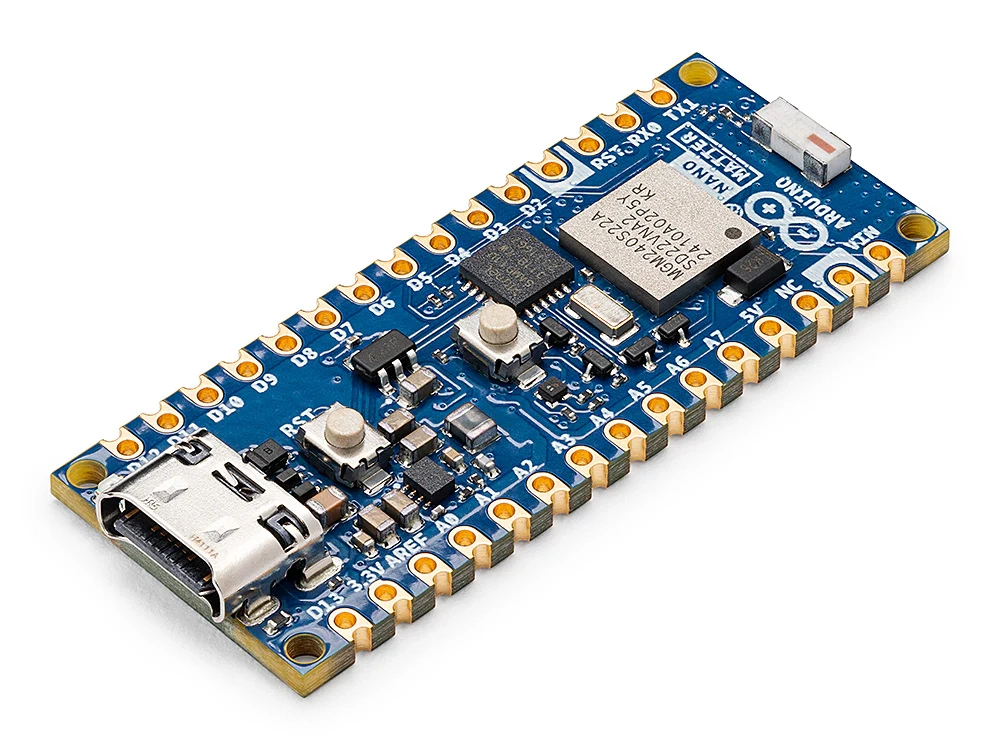What Is the Arduino Nano Matter?
The Arduino Nano Matter brings Matter to the masses. This tiny board simplifies Matter development, enabling makers and professionals to easily create innovative IoT devices with seamless interoperability across ecosystems.

Please note: This page may contain affiliate links. Read our ethics policy
In December 2024, the Arduino Nano Matter board was launched. A collaboration between Arduino and Silicon Labs, the device is intended for prototyping IoT and smart home solutions. But it is also ideal for hobbyists to develop their own Matter devices. In fact, Silicon Labs call it the “simplest and quickest way to start developing with Matter.”
To promote the new board, representatives of Arduino and Silicon Labs have explored its potential in a live demonstration. This should help you get a better idea of what the Arduino Nano Matter board can do.

Arduino Nano Matter: A Deep Dive
While measuring just 18mm by 45mm, the Arduino Nano Matter is a powerful development board designed to simplify the creation of Matter-enabled devices. "This tiny board is in the really popular form factor of the Nano that you are all already probably familiar with," explains Arduino’s Stefano Implicito.
And despite its small size, this board is packed with some game changing features for a board of this type.
At its core lies the MGM224 from Silicon Labs, an M33 microcontroller with a clock frequency of 78MHz, which Implicito calls “the brain […] the main microcontroller of the board," This is a powerful processor for such a small board, and provides the necessary computational power for running Matter applications.
Where the board really comes into its own, however, is integrating Matter over Thread connectivity, enabling seamless communication with other Matter-enabled devices on a local network. "Matter over thread connectivity," as Implicito highlights, "ensures flexibility and scalability for both developers and users."
The Arduino Nano matter also includes Bluetooth connectivity, offering alternative communication options.
The board boasts a wealth of interfaces, making it versatile for various projects.
-
Serial: For communication with other devices.
-
I2C: For interfacing with sensors and other devices.
-
SPI: For high-speed communication.
-
PWM: For controlling motors and other devices.
-
Digital and Analog I/O: For interacting with external components.
These interfaces open a considerable range of options. "You have access to other peripherals," Stefano explains, "so if you would like to connect other devices, other sensors to the system, you can do that right away really simply."
To aid in connecting other devices and for headless control, the Nano Matter also features:
-
Castellated pins: These aid easy soldering either for external devices or integrating the board into custom designs.
-
User-programmable push buttons: For user interaction.
-
USB connector: For power and debugging.
-
Embedded antenna: For convenient wireless connectivity.
The Arduino Nano Matter Is Designed For Ease
Getting started with the Nano Matter is intended to be straightforward, thanks to the intuitive Arduino IDE and the provided libraries. "The library that you can use together with the nanomatter is a dedicated library that allows you really really simply with the standard Arduino IDE and the standard Arduino programming language to program your matter device," explains Stefano Implicito.
In short, if you're already familiar with Arduino, this should seem pretty familiar.
The extensive documentation on the Arduino website offer excellent resources for learning and experimenting with the Nano Matter board. You can buy the Arduino Nano Matter direct from Arduino.